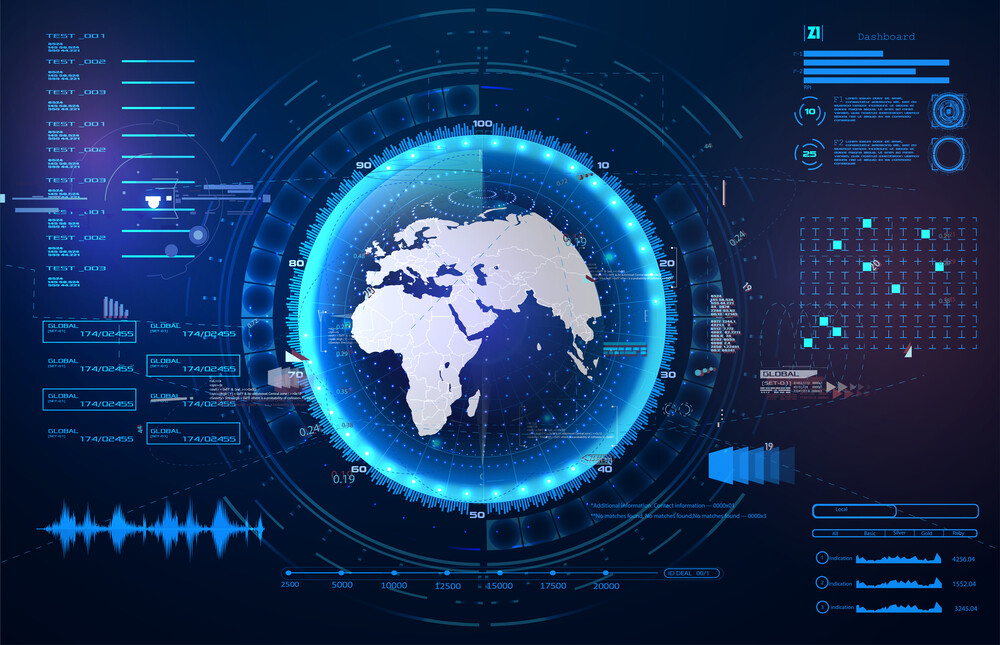While the most apparent concerns in the Ukraine-Russia conflict are for those in the region who are in harm’s way, there are sure to be more far-reaching implications. As with any global conflict, this conflict will have ramifications that extend beyond the borders of either country. Russia’s emphasis in recent years on cyber warfare makes cyber warfare risk preparation a chief concern for those in government and private sectors alike.
Experts have been sounding the alarms about the potential for this conflict to escalate with major cyberattacks that impact nearly every aspect of the economy and public life. But how severe is this risk, and what organizations could be affected by such an attack? Furthermore, what steps should you take to protect yourself from cyber warfare?
Escalating Conflict and the Digital Landscape
Political tensions along the Russia-Ukraine border have simmered for years, with the most notable escalation being the internationally-condemned annexation of the Crimea region by Russia in 2014. Recent escalations have furthered the divide between Russia and the western world, with the rhetoric of ‘total war’ being used by Russia’s Vladimir Putin to describe the sanctions employed to condemn Russia’s invasion.
In recent years, the Russian government’s significant focus on cyber warfare has experts alerted to this conflict’s danger across the digital landscape. State-sponsored malicious actions online, such as the proliferation of propaganda and misinformation, have been an open secret in Russia. The recent escalation of the conflict has experts concerned that Russia may explore new avenues of digital warfare in retaliation.
Types of Cyber Attack
Attacks on your organization’s digital infrastructure can come in various forms. Here are some of the most common cyberattacks that organizations are at risk of.
Phishing Attempts
A phishing attempt is a catch-all term used to describe third-party actors’ attempts to gain access to passwords used on the networks your organization operates on. These will usually take the form of an email posing to be a representative of another company or someone within your organization, along with a misleading link that requires users to enter their password, which the hacker then uses to access your systems.
Trojan Horse
Like a phishing attempt, a trojan horse uses deceit to access your systems. In this case, a trojan horse program poses as something that a user would intentionally download, like a game or useful tool. Once downloaded, the program infiltrates your system to perform the malicious function the hacker designed it to do.
Ransomware
One particularly prevalent threat in the modern business world is ransomware. Once installed onto a system, this type of malware locks the affected device out from users and shows only a screen with instructions on how to pay to have the now-encrypted files unlocked. This attack has led to millions of dollars of damages for organizations, from hospitals to energy providers.
Organizations That Could Be at Risk
Given the pervasiveness of technology in just about every aspect of modern life, cyber warfare risk preparation is a concern across a broad array of organizations. Here are some of the sectors that may find themselves under threat should the Russia-Ukraine conflict escalate online.
Healthcare Providers
More of the services that healthcare professionals provide to their patients are handled using digital tools than ever before, which has led to healthcare organizations being targeted by cyber threats such as ransomware attacks in the past. Unfortunately, this conflict will exacerbate this issue, threatening patient records and the systems that healthcare workers rely on. Cyber solid security practices ensure that the organization will be able to deliver the services that patients need.
Financial Institutions
The amount of money accessed by financial institutions has meant that these organizations are always a lucrative target for bad actors online. Still, now the Ukraine-Russia conflict has further heightened the risk such institutions face. During this conflict, economic sanctions involving global banking systems have been a critical focus point. Retaliation through cyber warfare is a distinct possibility that banks and other financial organizations should be prepared for.
Logistics Companies
Recent events have played havoc on the economic supply chain, and the risks posed to the digital aspect of the supply chain by this conflict threaten to make the problem worse. Computers, tablets, smartphones, and an array of other devices are used throughout the process of moving products to their intended destination. Each of these devices represents a potential weakness in the company’s cyber warfare preparedness and needs to be protected accordingly.
Cyber Warfare Risk Preparation Strategies
Securing your organization or business from digital threats isn’t as simple as pushing a button. Security is an ongoing process, not a one-step solution that you can implement and then forget about. Instead of waiting for a disaster to occur, ensure your security protocols are strong and up-to-date to be ready if a cyber attack occurs. Here are some strategies that any organization can benefit from:
Cyber Threat Awareness
While it may be an overused sentiment, knowledge truly is power when it comes to the world of cybersecurity. Ensuring that every team member is aware of common cyber threats and how to mitigate their risk is essential to your cybersecurity. Comprehensive initial training is an excellent first step towards this goal, but regular refreshers and reminders about the best practices to keep everyone aware are also essential.
Strong Password Protocol
One of the most common ways of a cyberattack is a malicious actor gaining access to your organization’s systems through a compromised password. Regularly informing your employees on creating strong passwords and updating passwords will help keep your systems secure. Education on how to avoid common password scams is another vital component of cybersecurity.
Device Security Protocols
Especially with the increase in employees working from home that recent years have brought, keeping the devices that are used in the operation of your organization secure is more critical than ever. If an unintended user gains access to one of these devices, they could have easy access to critical information and programs that your organization uses. Educating employees on securing their devices in private and public spaces helps mitigate this risk.
Keeping your organization secure from digital threats in the increasingly-dangerous global climate isn’t something you should leave to chance. Get the expert help you need on your side by working with our team. Contact Edafio Technology Partners today and achieve a new level of security for your organization!








